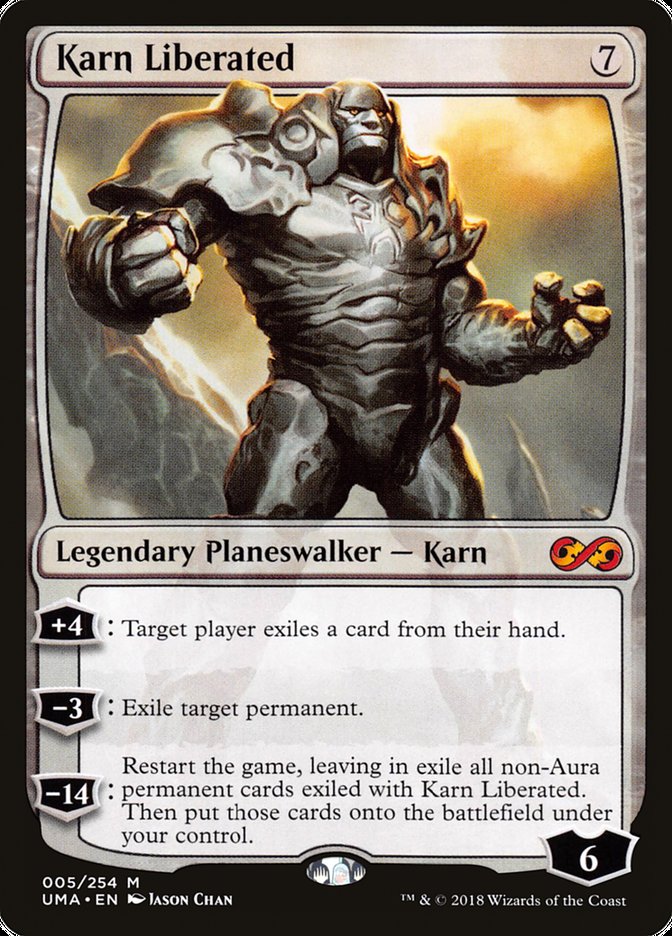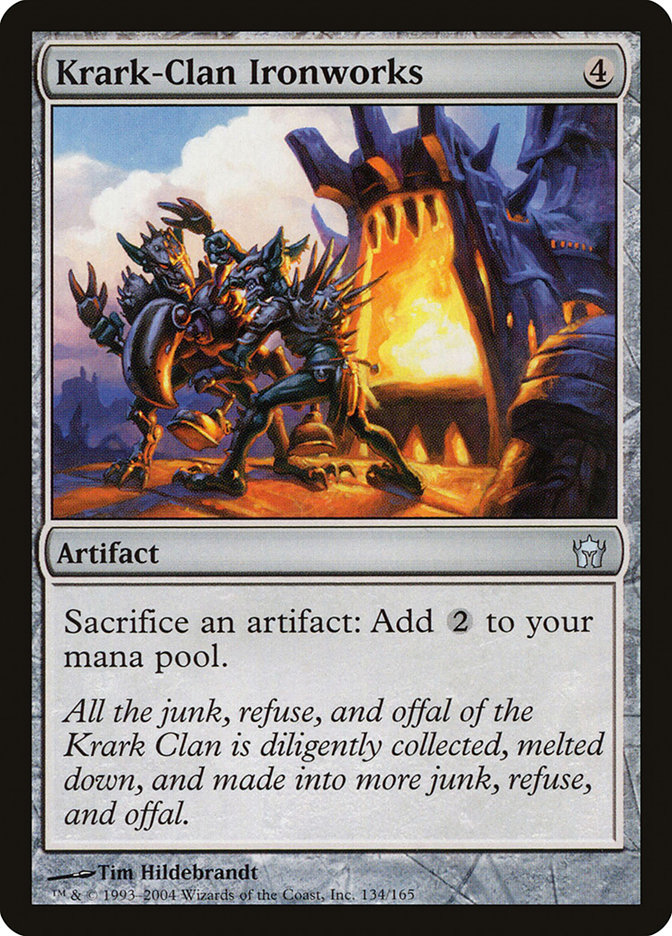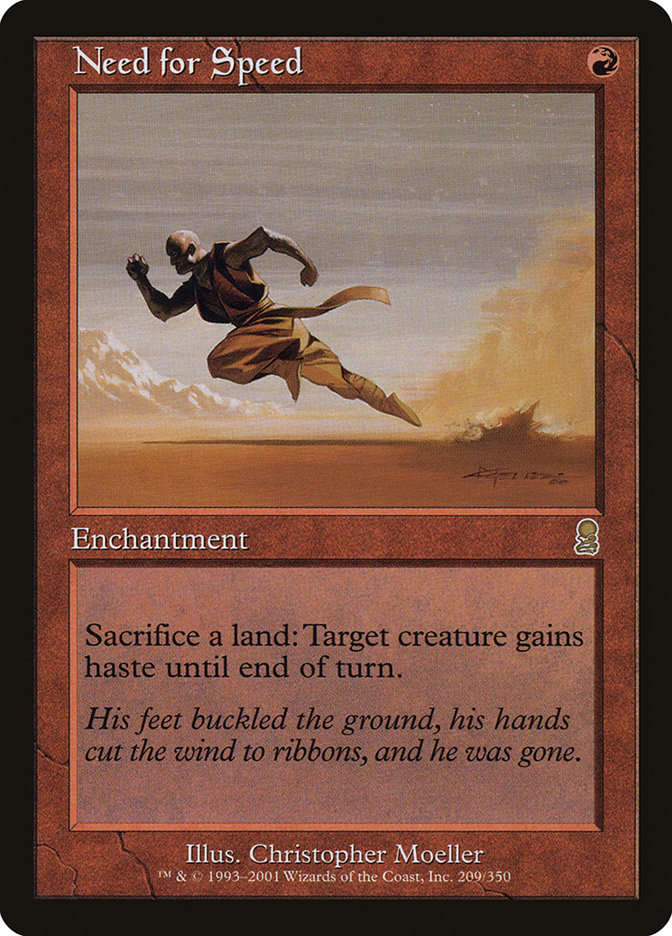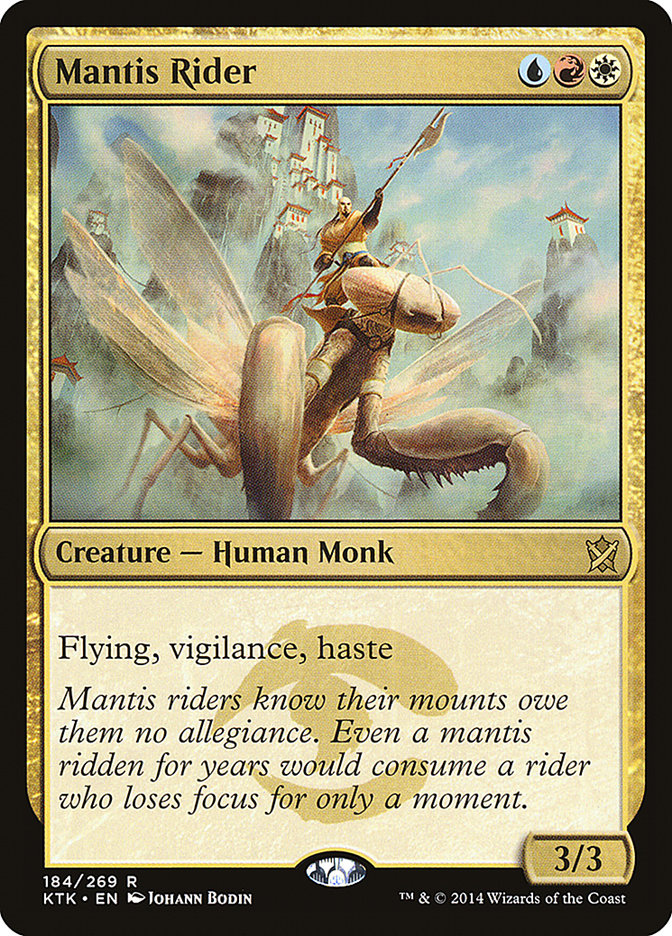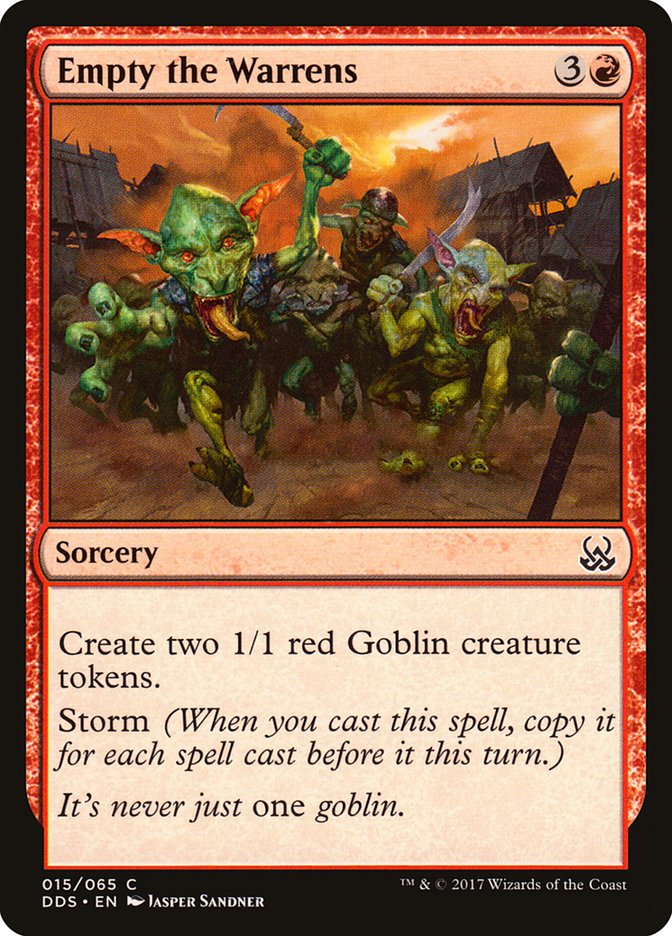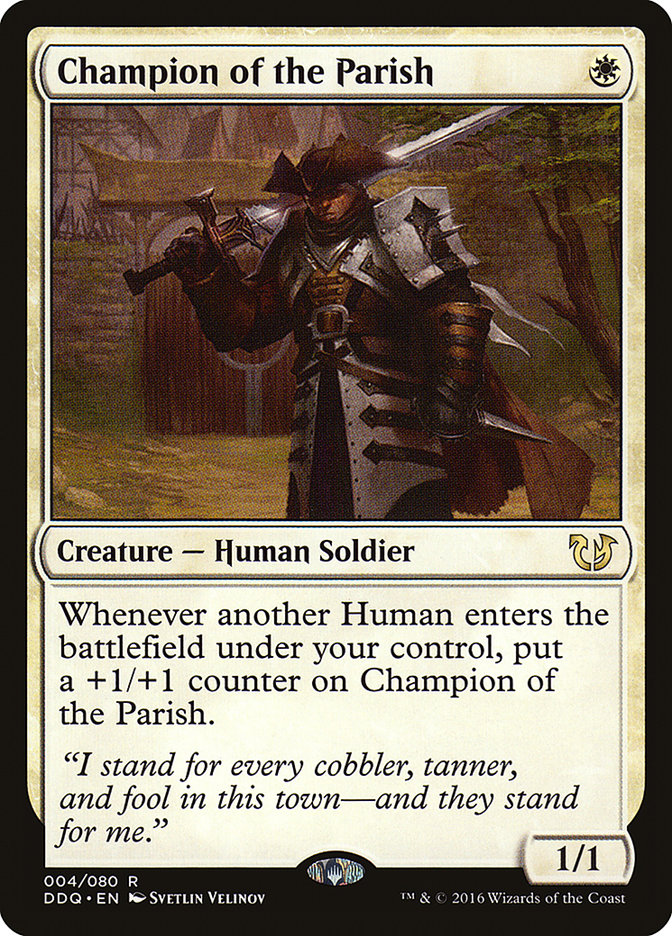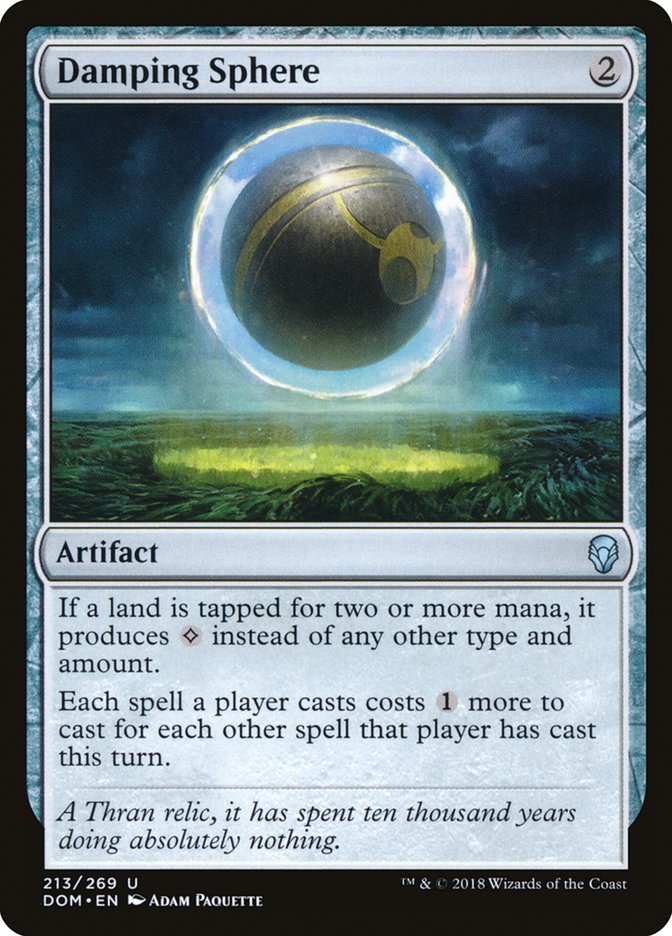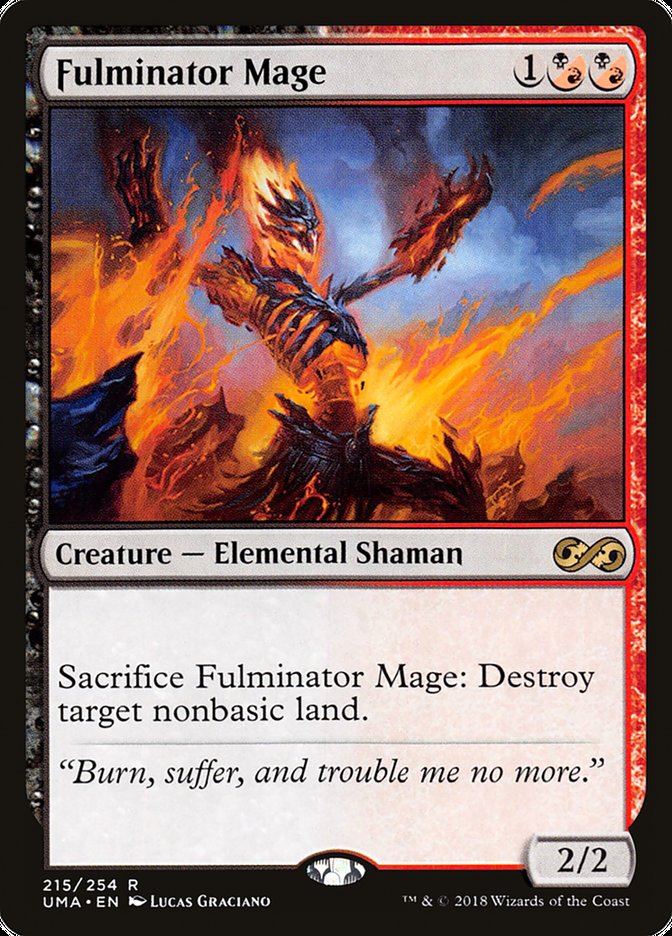If you’ve got a big Modern tournament coming up soon and you’re looking for
help deciding which deck to play, StarCityGames has you covered. Earlier
this week,
Dylan Hand
wrote a great
guide
to the best decks playing the best cards in Modern. Ari Lax let
you in on the
weaknesses
of the best decks in Modern.
Ross Merriam
hit you with the
hard truths
about the current state of the format that you didn’t want to hear. And
that only brings us through Tuesday. Follow the advice written in those
articles and you’re sure to land on a great deck for the weekend.
But you’re not going to listen to those smart people, are you? No, you’re
going to read all about how the only playable Modern decks are the ones
that use Faithless Looting, Noble Hierarch, or Ancient Stirrings and then
go off and register zero copies of those cards. You’re going to play
Scapeshift or Storm or Jeskai or Death’s Shadow or Burn or even regular old
boring Affinity, because no amount of pretending that you’re willing to
play whatever’s good in the moment is going to pry the deck you know and
love out of your fingers come tournament morning.
Same here.
Look, I’m not trying to get all holier-then-thou on you here. We all know
I’m going to be registering 75 Jund cards for both#SCGBALT and the #SCGINVI. I’m
sure none of my colleagues here at StarCityGames would support me in that
decision, but I’m going to make it anyway. I just can’t stop myself from
casting Tarmogoyf.
Like most things in Magic, I don’t believe there’s one right way to
approach the Modern format. Some people, who I affectionately refer to as
the Emma Handy
crowd, believe that the best way to gain an edge in Modern is to switch
decks every weekend in search of that weekend’s best deck. Others believe
that the best approach is to master a single archetype or class of
archetypes. Adherents of both philosophies have found plenty of Modern
success.
At this point, I’m pretty clearly in the second camp. I tried to fight it
for a long time, as playing the best-positioned deck every weekend is what
“good” players are “supposed” to do, but eventually I gave in. Jund is far
and away the deck that I’ve had the most success with in Modern, even when
the hive mind decrees that it’s poorly positioned for the weekend. For
better or for worse, tuning the same deck over and over again to beat
different Modern fields is the Modern skill set I’ve developed.
Jund cards for both #SCGBALT and the #SCGINVI. I’m
sure none of my colleagues here at StarCityGames would support me in that
decision, but I’m going to make it anyway.
If you’re a fledgling archetype specialist, then for you it’s going to be
for the better. Today, my mission is to teach you all the tools of the
trade, from one archetype master to another. I can’t tell you how to play
your deck of choice or what specific cards you should be playing, but I can
help you understand the things you should be thinking about and the trends
you should be keying into as you prepare your weapon of choice for another
weekend of fierce battling.
Targeting a Metagame
The first big hurdle any archetype specialist must overcome is the idea
that because you’ve decided to recuse yourself from the deck selection
portion of the tournament process you no longer need to care about the
twists and turns of the metagame. This couldn’t be further from the truth.
If anything, you must pay more attention to the metagame to find success as
an archetype specialist than you do as someone looking to switch decks
every weekend. Finding one of the handful of decks that is well-positioned
on a given weekend is an easier ask than figuring out the optimal way to
pilot a poorly-positioned deck because there’s much less room for error
when your deck isn’t naturally well-suited for the metagame at hand.
Figuring out what’s important in Modern can be a daunting task due to the
vast number of decks that are viable in the format. If you try to approach
this task like you would Standard and simply keep track of how each deck is
trending popularity-wise, you’ll never get anywhere. For instance, right
now I believe that Azorius Control and Jund are generally held to be poorly
positioned. Humans and Dredge are on mild downswings. Hardened Scales and
Burn are on mild upswings. Bant Spirits, Tron, Amulet Titan, and Ironworks
are all sitting pretty. And in the midst of all this, the Arclight Phoenix
decks are still largely an unknown quantity, but one that is most certainly
trending upwards.
That’s a lot of information about how popular different decks in the format
are going to be, and not a lick of it is useful. There are just too many
decks involved in that block of information for extracting anything
actionable from it to be practical. We need a different method.
Fortunately, Modern is a world where the details might change, but the
underlying story is always the same. Modern is an eternal battle between
the degenerate solitaire decks and the interactive heroes desperately
fighting to keep them in check. Understanding the relative strength of
these two axes of the format will let you prepare much better than
understanding the strength of each deck in isolation.
Right now, the war is being won by the non-interactive decks. The Guilds of Ravnica fueled resurgence of Dredge put the final nail
in the coffin of interactive primacy and returned Modern to its natural
state of being ruled by the goldfishing host. On balance, it’s more likely
than not than any given opponent of yours in a Modern tournament this
weekend will be looking to end the game their way then seeking to stop you
from ending the game your way.
When non-interactive decks are the order of the hour, you need to make your
deck as fast as possible. Whether your pet deck is Storm, Azorius Control,
or anything in-between, speed is what will help you in these climates.
Non-interactive decks include the following: Dredge, Storm, Tron, Amulet
Titan, Ironworks, Scapeshift, Hardened Scales, Infect, and plenty more
besides. These decks have no common denominator, aside from the simple fact
that you need to stop them or kill them in short order. The only way to be
better against all of them at once is to be faster yourself.
It’s not the case right now, but when interactive decks are on top of the
format you need to value resiliency over speed in building and piloting
your deck. Decks like Humans, Spirits, Grixis Shadow, Jund, and Azorius
Control all fit this interactive category, and these are decks that you
beat by continuing to present a cohesive gameplan through their first few
pieces of interaction.
This is the big picture of Modern. Do you need to be fast to beat the
non-interactive decks, or do you need to be resilient enough to withstand
the interactive decks? Right now, the answer is resoundingly in favor of
needing speed. This is a simple insight, but internalizing it will help you
prepare your deck for Modern battle far more than understanding the
micro-trends of every deck in the format.
We can, of course, go a little deeper. At any given point in time, either
non-interactive decks or interactive decks will be ahead in the format. I
generally choose to care about nearly all the decks in the category that’s
ahead, and then the very best of the category that’s behind. Right now,
non-interactive decks are winning, so I care about beating as many of them
as I can, as I expect all of them to show up in force. At the same time, I
can’t completely disregard the interactive decks. I can, however, be more
selective. I want to beat exactly Humans and Bant Spirits, the two most
popular interactive decks, and I’m not going to respect any of the other
interactive decks one whit.
Since I want to beat such a wide range of non-interactive decks, I need to
maximize the only angle good against all of them: speed. If I’m tuning a
non-interactive deck, I’m going to make every decision I can that ensures I
kill my opponent as fast as possible. If I’m tuning an interactive deck,
I’m going to play all the Tarmogoyfs and Teferi, Hero of Dominaria type
cards that I can and do what I must do to reach favorable terminal
gamestates as soon as possible. The turn I end the game is going to be at
the forefront of my mind the entire time I’m constructing my maindeck.
I’m willing to give a nod to Bant Spirits and Humans when breaking ties,
but that’s about all the consideration I’m going to give them in my
maindeck. The sideboard is an entirely different matter, of course, but
we’ll get to that. Decks of the non-dominant axis, no matter how popular,
just can’t be respected in game 1 or you give up way too many points
against the dominant axis. Right now, beating non-interactive decks is
important enough that I’m happy to get all my points against Humans and
Spirits in the sideboard games.
One last piece of advice on the subject of targeting a metagame: be bold.
The metagame I’m targeting this weekend is comprised of the following decks
in no particular order:
- Humans
- Bant Spirits
- Dredge
- Arclight Phoenix
- Tron
- Hardened Scales
- Burn
- Ironworks
- Amulet Titan
Does that mean I’m going to give up if I get paired against Azorius
Control, since it’s not on my list? Of course not. I’ll have a plan ready
and implement as well as I’m capable of, but that plan will have been
constructed using the cards I already have. Azorius Control gets to have
zero influence over my decklist this weekend, but that doesn’t mean I can’t
beat Azorius Control anyway.
Don’t Get Attached
If you want to be an archetype specialist, there’s one big rule you must
learn above all others: don’t get attached. This might not make sense, as
being an archetype specialist means, by definition, that you are attached
to your deck. That’s exactly my point: that’s all the attachment you’re
allowed. You’ve chosen and locked in a deck to play and you can’t afford
any more rigidity in your process. You must be open to being
flexible in how you build and play your chosen archetype or you won’t be
able to find consistent success as the Modern tides wax and wane.
Specifically, I’m talking about sideboard plans. It’s human nature to find
a plan you like in a matchup and then stick with it. You find a way to
sideboard that beats Bant Spirits, and from that point forward that plan is
your Bant Spirit plan. When Spirits is good, you play tons of cards that
help that plan. When Spirits is bad, you play less cards that help that
plan. This approach is very normal, exactly what most players do, and
something you need to stop doing immediately.
When Storm first broke out onto the Modern scene, I spent a lot of time
thinking about how to beat it with Jund and came up with a plan I liked. I
valued disruption over my clock, figuring that as long as I had the
graveyard covered, they would be unable to find a Grapeshot win no matter
how long it took me to end the game. Storm’s counterplan to this is Empty
the Warrens, but I had that covered by having a wide array of Goblin token
answers in my 75.
Fast forward to this weekend. I’ve cut Maelstrom Pulse from my maindeck and
only have one sweeper in my sideboard. I now have exactly one answer to
Empty the Warrens, and my prior plan is unworkable. If I viewed that Storm
plan as the one true plan, my only options would be to surrender the Storm
matchup or include a couple more sweepers in my list, even though I don’t
really want them.
Instead, I’ve developed a whole new Storm plan. By placing an increased
priority on clocking the Storm player and targeting pay-off spells over
card advantage spells with my discard spells, I can force Storm players
into spots where they must play defensive Empty the Warrens that I can then
manage in combat and not lose to.
Is this plan better than the old one? No, but neither is it worse. It’s
just different and that’s important because I don’t have access to the same
cards that made the old plan viable. Storm isn’t an important enough
matchup this weekend for me to want to play cards in my sideboard just for
it, but neither is it off the radar enough that I’m comfortable
surrendering the matchup. Modern’s card pool is deep enough that there’s
plenty of ways for every deck to approach every matchup – you just need to
make sure you’re always choosing the plan that meshes the best with the
plans you want for the other matchups you care about on a given weekend.
Homework: take that list of decks we decided to care about from earlier and
write out as many top-level sideboard gameplans against each of them as you
can (at least two). Don’t mention any specific cards that you want to bring
in or out, just articulate distinct approaches to each matchup that you
think could work. For example, here’s this exercise completed for Jund
against two decks:
VS Humans
-
Overload on spot removal and use it to keep the battlefield clear
of their most important cards: Mantis Rider, Champion of the
Parish, Thalia’s Lieutenant. Race their mopey creatures with
Tarmogoyf and friends. Prioritize Lieutenant and Phantasmal Image
with discard whenever possible to stop the mopey creatures from
becoming a problem. The goal is to keep their battlefield less
impressive than a Tarmogoyf, not to keep it empty. -
Rely on sweepers to keep their battlefield empty. Devote all your
resources to making the game go as long as possible and trust in
your ability to win the lategame. Kill their threats above
deploying your own, but once you do land a threat, protect it and
ride it to victory.
VS Tron
-
Keep them off Tron at all costs. Utilize land destruction spells to
keep them from assembling Tron and then beat them down with
creatures while they are forced to play their spells fairly. -
Let them assemble Tron. Point every discard spell at threats and
play tons of removal for every class of threat they might throw at
you. Your primary goal is to kill them as quickly as possible, your
secondary goal is to answer every threat they deploy, your tertiary
goal is to put them into topdeck mode as soon as possible.
Sideboard Plans and Overlap
Having a choice of sideboard strategies available to you for every matchup
is critically important, because there’s way too much ground to cover in
Modern for you to be able to consider matchups in isolation from each
other. In Standard you can afford to just divvy up your sideboard slots to
individual matchups in accordance to how much you care about them. In
Modern, if you devoted two sideboard slots to each of seven matchups you
would still not have answers for most of the format and you wouldn’t even
be all that well off in those seven matchups.
Your sideboard cards need to be good for you in more than one matchup, and
that’s where things get tricky. We constantly put this pressure on the
cards themselves. “Yeah, Damping Sphere is great because it’s good in so
many matchups.” “I really like Fulminator Mage versus Tron, but the card is
super narrow and not good anywhere else.”
Spoiler: it’s not the card’s problem, it’s ours.
Instead of seeking out only the most flexible of cards, we need to be
seeking out plans that use the best cards. I’ve loved Fulminator Mage in
Jund for a long time, and the reason isn’t because I value it so highly
against Tron but because I’ve found plans for other matchups that make good
use of it. It’s not narrow for me, as I utilize it in a wide variety of
matchups.
You need to develop sideboard plans for the matchups you care about that
use the same cards. That’s the only way to be able to attack enough of the
Modern format to give yourself a fighting chance. You need to seek out
overlaps in the ways you can approach different matchups. When a sideboard
plan of yours needs a lot of cards that you have no desire to play anywhere
else, either find plans for other matchups that use the same cards or scrap
the plan that needs them and try again. There’s no one right way to
approach a matchup, and matchups don’t exist in isolation. Overlaps are
key.
Here’s some quick overlaps on this metagame to get you started:
-
Some of the graveyard hate you want against Dredge and Arclight
Phoenix decks can also turn off a lot of the synergies in the
Hardened Scales deck. Looking at you, Leyline of the Void and Rest
in Peace. -
The artifact destruction you think of when you think about
Ironworks and Hardened Scales can also be factored into your plans
against Tron. -
The land destruction you want against Tron and Amulet Titan is also
surprisingly effective against Burn. -
If you want to be on a sweeper plan against Humans and Bant
Spirits, err towards sweepers that also permanently answer Prized
Amalgam, Bloodghast, and Arclight Phoenix.
This is far from a comprehensive list of the potential overlaps out there
and is intended to start your thinking, not finish it. Many of the overlaps
you’ll find are specific to your deck of choice and nothing I can say will
give you those without you putting in the work yourself. What work? Glad
you asked.
Go back to the homework from the last section, and for each plan you came
up with, write all the cards you can think of that would help you implement
that plan. When you finish, go through the list and look at which plans use
cards that no other plans do and which use cards that many plans do. If you
find an archetype where none of the plans you came up with use common
cards, sit down and think of new plans.
No one’s saying it’s easy, but this is the kind of thinking you need to be
well-versed in if you want to win with the same deck in every incarnation
of Modern.
Best of luck.




